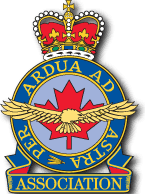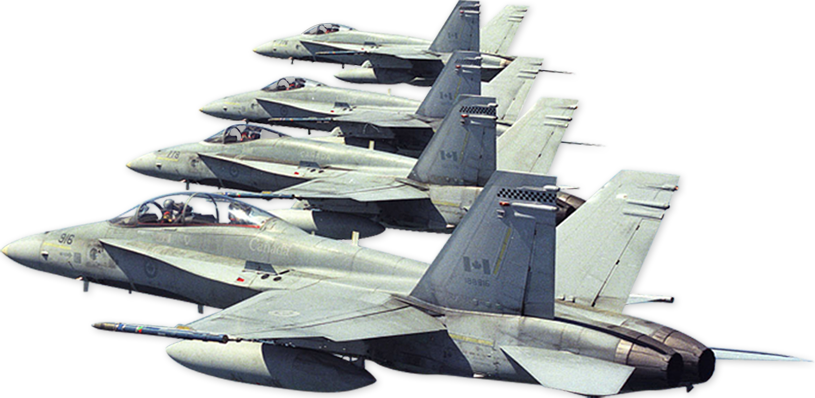Monday, May 1, 1941
Dull. Some formation flying and fighter attacks were done by the Squadron. Nothing of importance to note today.
Tuesday, May 2, 1941
Formation flying and fighter attacks.
Wednesday, May 3, 1941
Bright morning, overcast later. The usual training flying done today. Nothing of importance to report.
Thursday, May 4, 1941
P/O Gubb posted to 96 Squadron, Cranage for night flying duty. The Squadron did some high flying above 20,000 ft.
Friday, May 5, 1941
F/L Trevena, P/O Colvin and P/O Waldon travelled to Lossiemouth by train to collect 3 Tomahawks. Air to Air firing done by the Squadron.
Saturday, May 6, 1941
Fine and sunny. Squadron training continues, formation flying and attacks etc.
Sunday, May 7, 1941
Nothing of importance to report.
Monday, May 8, 1941
Nothing of importance to report.
Tuesday, May 9, 1941
Fine and sunny. Squadron training continues, formation flying and attacks etc. F/O Oatey attached to the Squadron for armament duties from Air Ministry.
Wednesday, May 7, 1941
Nothing of importance to report.
Thursday, May 8, 1941
Nothing of importance to report.
Friday, May 9, 1941
Sgt Morrison flying Tomahawk AH. 879 crashed on landing at Bagington. Pilot very shaken although without external injuries.
Saturday, May 10, 1941
Formation flying, air to air firing and some flying above 20,000 ft were done by the Squadron.
Sunday, May 11, 1941
One of the great days as 403 Squadron became operational from 11th May. The flying for the day was not very great, as the weather was only moderately fair with visibility 3-4 miles. At 1330 hours, S/L Morris and P/O Anthony did a patrol at 25,000 feet, which lasted until 1440 hours. About an hour later, F/L Gillen, P/O Ford and Sgt Sones who had taken off for firing practice at 1440 hours, were diverted to intercept an enemy raider. They did not succeed in making an interception and landed at 1530 hours to the annoyance of F/L Gillen who thought he saw a smoke trial from the e/a. The remainder of the days flying consisted of firing at Bramcote by two pilots, a practice interception with 308 (Polish) Squadron and some aerobatics by one of the pilots. So the first operational day for the Squadron was comparatively uneventful. No aircraft were damaged, but when starting off on patrol, the CO was delayed in taking off by the fact that the inertia starter failed to operate.
Monday, May 12, 1941
The day broke fine and clear but, as the morning wore on, the weather deteriorated until by 1100 hours the cloud base was at 3,000 feet and visibility was only about 3 miles. At 1100 hours, 2 aircraft took off on patrol over the base at 15,000 feet, an enemy aircraft being plotted over the aerodrome at that height. They were not successful, however, in making an interception and returned to base at 1215 hours with no untoward incidents. At 1140 hours, another section of 2 aircraft took off also to patrol base at 15,000 feet. They had no luck either and landed again at 1220 hours. Both these patrols were done by ‘B’ Flight. In the afternoon, ‘A’ Flight put in a number of section attacks, some local flying and aerobatics. Sgt Thomas who went up to practice cloud flying bent one of his wing tips on landing, but the damage to the aircraft was not serious.
Tuesday, May 13, 1941
The day broke moderately fine. The Squadron was not on operations and, as the weather slowly deteriorated until the cloud base was down to 1,000 feet, not a great deal of flying was done. Six pilots flew from Wales for firing practice. Three pilots carried out some formation flying. Apart from this, there was no other flying done except for a test flight and some low flying practice done by two pilots.
Wednesday, May 14, 1941
The weather was poor, with visibility less than a mile and cloud level down to 800 feet. Two aircraft took off on a patrol over base at 1410 hours. There was little other flying for the day, as the weather showed no improvement. Three aircraft did formation flying practice for 35 minutes, and two weather tests were also carried out.
Thursday, May 15, 1941
The weather was again bad. No operational flying took place. Some R/T practice was done by two pilots. In addition, formation flying, section attacks, and quarter attacks were done later in the day as the weather improved.
Friday, May 16, 1941
The weather improved and a considerable amount of training flying was put in without incident, but no patrols of any kind took place. Eight pilots went over to Speke for air firing and put in about 20 hours flying on the job. Apart from this, four pilots, including the CO, did section attacks at 8,000 feet and two pilots did some formation flying. F/Os McKenna and Price joined the Squadron for flying duties. F/L Christmas was posted from 400 Squadron for flying duties as a Flight Commander. All three are Canadians.
Saturday, May 17, 1941
The weather broke fine and clear. A patrol was maintained over Lichfield at 20,000 feet from 1540 hours until 1650 hours, but no interception was made although an enemy aircraft was believed to be in the vicinity. This was the only operational flight, but training flights were on a considerable scale. A Squadron formation was done by 12 aircraft. A number of section attacks were made by nine aircraft at different times and other local flights were carried out.
Sunday, May 18, 1941
The weather continued fine. Interception practice was carried out by three aircraft for one hour in the morning. Section attacks were carried out by six aircraft in the afternoon. Four aircraft flew to Debden and back putting in one hour and ten minutes flying.
Monday, May 19, 1941
There was no flying possible owing to weather. Rain persisted all day and cloud level was as low as 150 feet. P/O Gibbs attached under training to Squadron as Intelligence Officer.
Tuesday, May 20, 1941
There was no flying owing to the weather, which showed little improvement, cloud level being at about 500 feet for most of the day. P/O Barnes, Squadron Intelligence Officer, was posted to North Weald to Operational duties.
Wednesday, May 21, 1941
Weather improved slightly, little flying in the morning; only three aircraft took off, one for a weather test and the other two for local flying formation. At 1900 hours a patrol of two aircraft was maintained over the base at 10,000 feet and lasted until 1935 hours. Lt Zemke, USA Air Corps attached to the Squadron as an observer for the US Government. At 2110 hours, two aircraft of ‘B’ Flight were sent on patrol by mistake to patrol base below cloud by operations. These should have been sent to intercept paratroopers who were to be dropped on the aerodrome. Patrol returned at 2120 hours. At 2155 hours, two aircraft were sent to intercept enemy aircraft carrying paratroops. These enemy aircraft were intercepted at 750 feet and would have been shot down. The weather by this time had deteriorated badly and persistent rain and low clouds were experienced all the evening. Patrol returned at 2140 hours. The paratroops were landed on the aerodrome at 2130 hours and adequate precautionary action was taken by aerodrome’s defences.
Thursday, May 22, 1941
The weather only improved slightly and there was little flying. In the afternoon three aircraft of ‘A’ Flight flew to Rhyl for a firing practice and four aircraft of ‘B’ Flight did formation flying. Cloud level was 1,200 feet.
Friday, May 23, 1941
The weather improved slightly and there was a great deal of flying. Seven aircraft of ‘A’ Flight did formation flying in the morning and six aircraft did Squadron formation in the afternoon. Six aircraft of ‘B’ Flight made a formation flight (Sections Blue, Black and Green) in the morning. A section formation by four aircraft and a Squadron formation by six aircraft were made in the afternoon.
Saturday, May 24, 1941
Weather conditions were still bad, low cloud ceiling for most of the day and rain in the early afternoon. In the morning, ‘B’ Flight did Squadron formation flying and so did ‘A’ Flight. At 1545 hours three aircraft took off to patrol base at 10,000 and returned at 1645 hours. Two more aircraft were told to patrol base at 1820 hours but there were no incidents and they returned to base at 1830 hours. Apart from this, there was some low flying and a demonstration flight to Lutterworth by three aircraft.
Sunday, May 25, 1941
Weather still very bad; cloud base at 2,000 feet and poor visibility. At 1225 hours two aircraft were sent up to patrol base at 8,000 feet. Rain was encountered at 2,000 feet. Sgt Sones stated he thought he saw a smoke trail up at 20,000 feet but no enemy aircraft were intercepted. Both aircraft returned to base at 1315 hours. Again at 1230 hours two further aircraft were sent up to patrol, they landed at 1355 hours.
Monday, May 26, 1941
The weather was still very bad, cloud and rain encountered at 2,500 feet. A certain amount of flying formation was carried out.
Tuesday, May 27, 1941
Weather improved slightly; there was a fair deal of cloud and low flying carried out by ‘A’ Flight in the morning and afternoon. F/L Trevena was obliged to land after 15 minutes in the air owing to the fact that his oil cap came off. At 1405 hours two aircraft of ‘A’ Flight were told to patrol Kidderminster at 10,000 feet. These returned at 1525 hours. No interception was made. The weather was fair, cloud at 2,500 feet 8/10ths cloud.
Wednesday, May 28, 1941
The weather improved slightly. Cloud 7/10ths at 2,000 feet. There was a great deal of local flying as the Squadron was using Spitfires for the first time. Both ‘A’ and ‘B’ Flights were flying the new planes in the afternoon. At 1330 hours, two aircraft of the section were told to patrol Worcester; these landed at 1715 hours. Both patrols were unable to intercept enemy aircraft. P/O Hyde arrived for intelligence duties.
Thursday, May 29, 1941
Nothing of interest to report during day. The Station gave a party for the Squadron during the evening. Lt Zemke found a sheep in his room about 0400 hours and a certain pilot fell in the pond at Henley; in general a good time was had by all.
Friday, May 30, 1941
Dull rainy weather. No flying. Squadron moved to Tern Hill. Advance party consisting of armourers and rearms and personnel from one flight left at 0800 hours. Main party should have left at 0900 hours but did not get away until 1100 hours owing to the baggage lorries reporting to Bagington instead of Henley. Consternation was caused owing to an order being received to the effect that servicing echelon is to be taken with the Squadron. Luckily sufficient transport had been ordered and the movement was completed without too many hitches. The air party could not take off from Bagington owing to weather.
Saturday, May 31, 1941
Weather fine but rather hazy. 7/10ths cloud. Squadron busy moving in. Squadron Headquarters are located in an old cottage next to the dispersal hut; this should be a considerable advantage in many ways. Nine Spitfires of the Squadron left Bagington at 1944 hours, arriving Tern Hill 2015 hours, and eight Tomahawks left at 1710 hours and arrived at 1755 hours.








